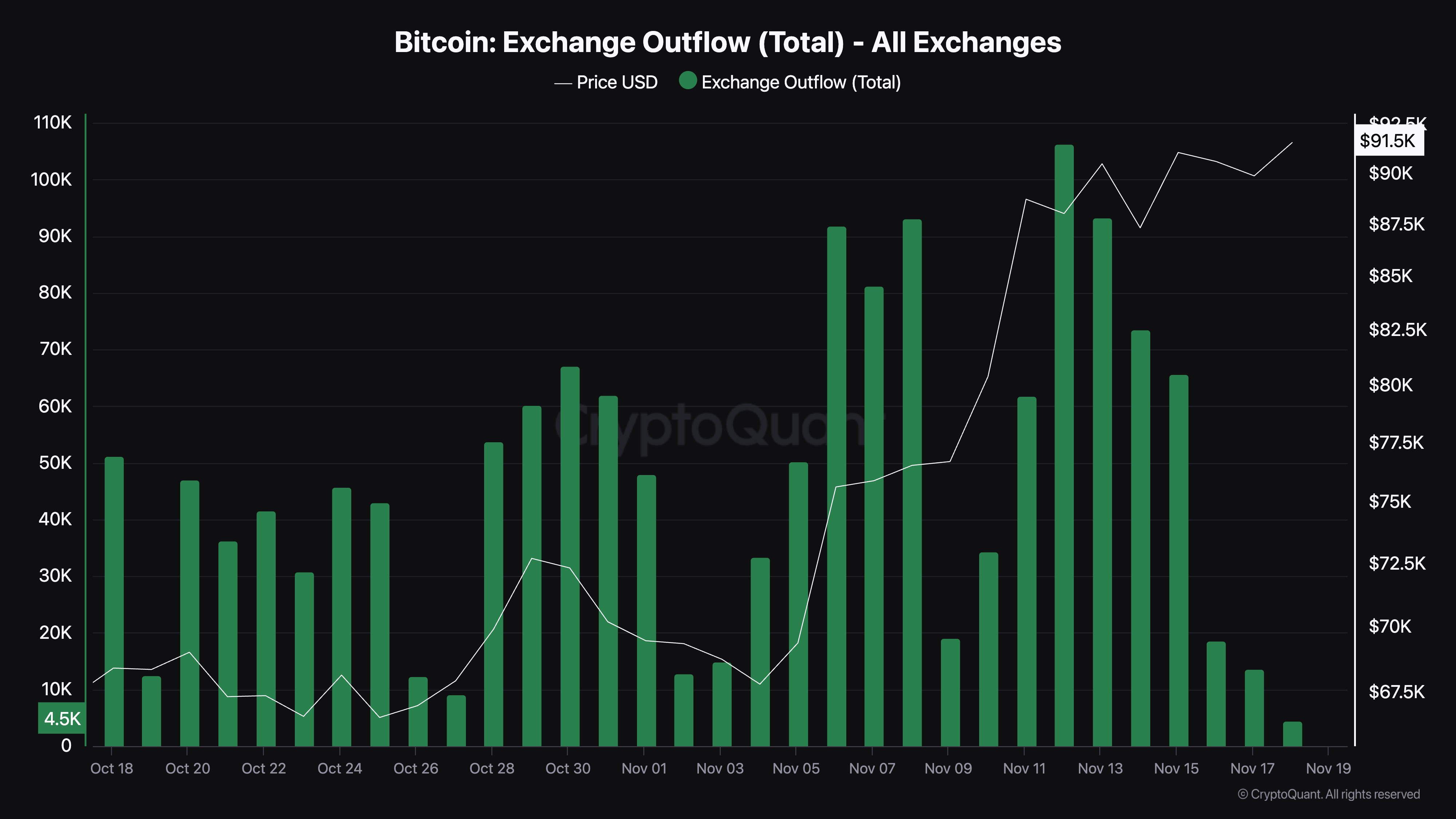-
Bitcoin stabilizes above $90,000 after reaching an all-time high of $93,477, prompting analysts to dive into key market indicators.
-
As Bitcoin cools from its recent rally, experts are evaluating on-chain metrics such as MVRV to predict its next moves.
-
“The MVRV ratio has historically peaked around market tops,” noted Yonsei Dent, a CryptoQuant analyst, emphasizing its importance in trend analysis.
This article discusses Bitcoin’s recent price stabilization above $90,000, analyzing trends and crucial indicators shaping market predictions.
Is there still room for upward momentum?
As Bitcoin’s price stabilizes after recent all-time highs, the question arises: Is there still potential for further gains? Understanding the cryptocurrency’s price movements involves closely examining relevant market metrics.
According to Yonsei Dent from CryptoQuant, the MVRV (Market Value to Realized Value) ratio plays a critical role in assessing Bitcoin’s current valuation. This ratio compares the realized value of Bitcoin—what holders paid for their coins—to its market value. When the MVRV ratio is elevated, it indicates potential overvaluation and vice versa.
Dent points out that historical cycles in Bitcoin’s price often align with significant peaks in the MVRV ratio. Notably, during the market cycles of 2013, 2017, and 2020, highs in the MVRV ratio correlated with observable downtrends in Bitcoin’s price.

Source: CryptoQuant
Further analysis indicates that the MVRV ratio peaked at 2.78 in March 2024, just below its historical downtrend line. Despite some fluctuations, it has since recovered to 2.6, suggesting that Bitcoin might still have upward momentum potential. A monthly moving average golden cross over the annual moving average also highlights positive prospects.
Key metrics indicating Bitcoin’s next moves
To paint a comprehensive picture of Bitcoin’s future trajectory, it’s essential to assess a broader range of metrics beyond just the MVRV ratio.
Insights from CryptoQuant reveal that Bitcoin’s exchange outflows have generally surged alongside its recent price performance. However, this trend seems to have plateaued as of now. Notably, on November 17th, total Bitcoin outflows from exchanges decreased to approximately 13,617 BTC, a significant drop from over 30,000 BTC the previous week.

Source: CryptoQuant
This reduction in exchange outflows could indicate a shift in investor perception, signaling a potential pause in accumulation strategies or a more cautious approach among investors, possibly leading to a period of consolidation.
Another important factor is Bitcoin’s open interest, which reflects trader commitments in the derivatives market. As reported by Coinglass, Bitcoin’s open interest increased by 2.76% to reach $56.22 billion, while the overall open interest volume surged by 16.42% to approximately $61.83 billion.

Source: Coinglass
The growth in open interest generally signifies increased market participation and heightened trading volumes, which could pave the way for future volatility as traders adjust their strategies based on market trends.
Conclusion
In conclusion, while Bitcoin’s price has stabilized above $90,000 after a significant rally, various metrics suggest a complex outlook. Key indicators like the MVRV ratio and exchange outflows indicate a cautious sentiment among traders. Observations regarding increased open interest also raise the potential for future volatility, necessitating keen attention from investors. Overall, the next steps for Bitcoin will greatly depend on the interplay of these metrics, and staying informed will be crucial for navigating this evolving market landscape.
